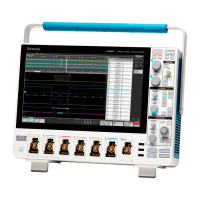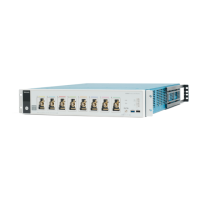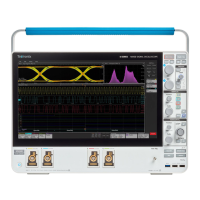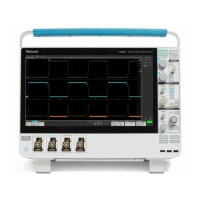Mask testing waveforms
Mask testing determines how well your signals conform to expected signal quality and provides instant automated statistical analysis. A
mask defines a portion of the instrument display that a signal must not enter. Mask testing is supported for analog channels, analog math
waveforms, analog reference waveforms, and RF vs. Time waveforms.
Create a Mask
Use the More button to create a new mask on the instrument display.
1. Double-tap the More button and select the Mask button on the DRAW A BOX menu window. This sets the DRAW A BOX function to
Mask mode.
2. T
ap outside the menu to close the DRAW A BOX menu. The Draw a Box icon is highlighted to show that it is in Mask draw mode.
3. Tap the Draw-A-Box Zoom icon at the up right of the Results Bar to draw a rectangle on the waveform screen for the first segment to
define. The segment created is associated with the channel to which it was added (in Stacked mode) or the active channel (in Overlay
mode).
4. Continue drawing rectangles to add other mask segments:
a. If in Stacked mode, you can draw mask segments in different waveform slices.
b. If in Overlay mode, select a channel before creating segments for that channel.
5. When you are done drawing the mask segments, tap anywhere to end the segment draw function.
6. To draw segments again, tap the Draw A Box zoom icon again.
7. To change the shape of a segment, see .
Edit mask segments on the screen
Use the touchscreen or a mouse to directly edit a segment, including moving, changing size, duplicating a segment, moving individual
vertices, adding and deleting vertices, and rotating the segment.
1. To move a mask segment, touch and drag the segment to a new position.
Mask testing waveforms
2 Series MSO MSO24 and MSO22 89
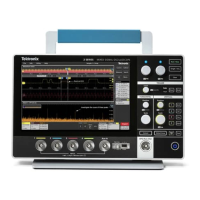
